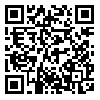Volume 23 - Special issue
mjms 2021, 23 - Special issue: 58-74 |
Back to browse issues page
Download citation:
BibTeX | RIS | EndNote | Medlars | ProCite | Reference Manager | RefWorks
Send citation to:



BibTeX | RIS | EndNote | Medlars | ProCite | Reference Manager | RefWorks
Send citation to:
Bathaie S Z, Faridi N, Salarifar A. The Structure of Spike Protein in SARS-Cov-2 and its Receptors on Host cell: Strategies for Drug Discovery Based on the Natural Products. mjms 2021; 23 :58-74
URL: http://mjms.modares.ac.ir/article-30-45455-en.html
URL: http://mjms.modares.ac.ir/article-30-45455-en.html
1- TMU , bathai_z@modares.ac.ir
2- TMU
2- TMU
Abstract: (3370 Views)
The new Coronavirus, which was named SARS-CoV-2 is one of the members of the Coronavirus family, which induces Covid-19 or acute respiratory infection. This virus was firstly known in 2019 in Wuhan, China; and then, rapidly propagated around the world. In this review, we will present the structure and function of the Spike (S) protein in this virus and its receptors on the host cells. In addition to ACE2, which was initially identified as the cell surface receptor of this virus, it was observed that CD147 and GRP 78 also act as the receptors on host cells. Also, based on the mechanism of action, a brief introduction will present the drugs used to treat this Coronavirus. The drugs that target S protein, Proteinases; RNA-dependent RNA polymerases, helicases, or structural lipids of the virus membrane. In addition, the proposed natural products which are currently recommended as supplements are discussed. For example, flavonoids, polyphenols, and polar compounds are substances whose antiviral effects against Coronavirus have been studied and demonstrated. In conclusion, since the effective drug to eradicate this virus is not yet known, it seems that according to the structural characteristics and mechanism of action, using natural compounds as a complementary or preventive medicine will be useful to inhibit or delay the entrance, proliferation, and/ or infectivity of the virus.
Keywords: Civid-19, ACE2, CD147, GRP78, Proteinases, Helicase, Flavonoids, Polyphenols, Polar compounds, RNA-dependent RNA Polymerase
Send email to the article author
| Rights and permissions | |
 |
This work is licensed under a Creative Commons Attribution-NonCommercial 4.0 International License. |







